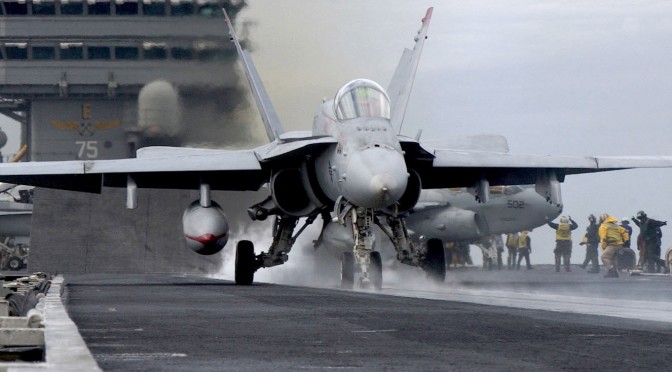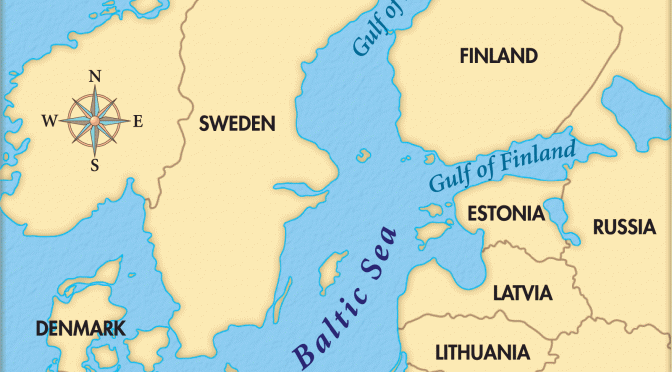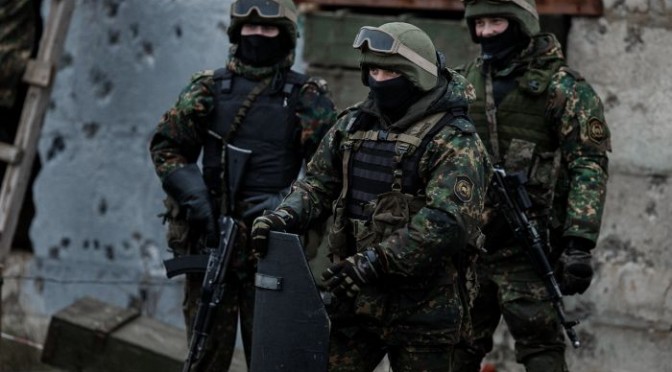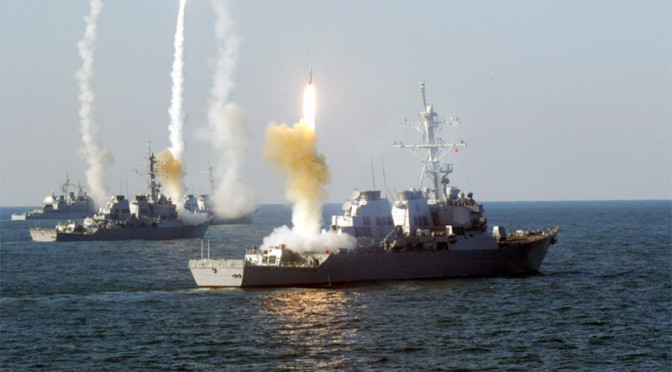Welcome to Part Two of the September 2015 Member Round-Up, covering the last two weeks of the month. In the past two weeks CIMSEC members have analyzed several international maritime security issues, including the aircraft carrier’s future in the U.S. Navy, Russian military deployments in Syria and the strategic alliance between India and the U.S. regarding security in the Asia-Pacific.
Beginning the Round-up at The War on the Rocks, Bryan McGrath discusses the effectiveness the aircraft carrier brings to the U.S. Navy’s high-end warfare contingency planning despite the mounting number of threats the carrier faces in potential conflict zones. Mr. McGrath explains that in addition to retaining the important traditional contributions the carrier provides to U.S. surface operations, it will also be a primary element of American tactical airpower in any high-end conflict and therefore must remain at the center of the Navy’s force structure.
Focusing on the Asia-Pacific region, Ankit Panda for The Diplomat discusses China’s first indigenously built aircraft carrier along with certain specifications including the ship’s length and width. Mr. Panda identifies that the carrier is significantly smaller than most U.S. carriers, however, it will certainly be able to provide the PLA-N with critical features for enhancing the country’s anti-access/ area-denial strategy. Also at The Diplomat, Mr. Panda examines the ability for the growing strategic and commercial bilateral relationship between the U.S. and India to increase regional stability in the Asia-Pacific by preventing piracy, terrorism and nuclear/ conventional weapon proliferation.
ADM. James Stavridis, for Foreign Policy, provides a geopolitical analysis on maritime Asia where he describes the artificial islands China has constructed as “unsinkable aircraft carriers” and considers their strategic ability to become long-term forward deployed airfields in the South China Sea. ADM Stavridis provides an explanation of how these unique airbases can alter the current dynamic of competing U.S. and Chinese forces in the region.
Leaving the Asia-Pacific region, ADM Stavridis speaks with Defense One regarding the deployment of Russian forces to Syria to assist the Assad regime. ADM. Stavridis explains that Syria has become a high-risk operation region considering Russian and U.S. forces have not established strategic or tactical levels of communication for deconfliction. Additionally, ADM. Stavridis identifies that the stationing of Russian missile-carrying ships as well as SA-22 air-defense systems on Syria’s coastline could limit U.S. areas of operation and add tension to an already hostile environment.
Staying in the Middle East, Chuck Hill for his Coast Guard Blog discusses the United Arab Emirates (UAE) acquisition of the SeaHake mod-4 Extended Range torpedo. Mr. Hill explains that the UAE acquiring the world’s longest-range torpedo will substantially increase their standoff capabilities in the Persian Gulf by allowing them to attack Iranian Kilo-class submarines inside their naval bases on the Iranian coastline in a potential conflict.
Also for his Coast Guard Blog and to conclude part two of the September Member Round-up, Chuck Hill discusses Poland’s acquisition plan to receive at least three Offshore Patrol Cutters (OPCs) starting in 2017. Considering significant Russian-NATO tensions throughout Eastern Europe and the Baltic Sea region, these “Czapla” OPC’s will resemble war ready Polish forces as the ships will have mine-countermeasure capabilities and a wide range of advanced weapon systems.
Members at CIMSEC were also active elsewhere during the second part of September:
- Robert Farley, for the National Interest, shares two articles regarding the deployment of Russian forces to Syria. In the first article, Mr. Farley describes Russian strategies and weapon systems that will be employed to combat the Islamic State. Conversely, the second article discusses ISIS strategies and weapon systems that will threaten Russian operations in the air and on the ground in Syria.
- James Stavridis, at Bloomberg Business, explains what would be entailed in the United States taking in significant amounts of Syrian refugees and states the pressing need for an international solution to the crisis.
- Chuck Hill, for his Coast Guard Blog, addresses the evolving relationship between the experienced U.S. Coast Guard and the very young Vietnamese Coast Guard.
- At the S. Naval Institute, LTJG Chris O’Keefe evaluates the preliminary survey results attempting to identify the figures for how many Junior Officers in the Navy today desire command.
- Scott Cheney-Peters, for the Project for the Study on the 21st Century, participated in a panel discussion focusing on the risk of nuclear war and the greatest threats promoting superpower conflict.
- Darshana M. Baruah, for the Business Standard, discusses the special relationship between the U.S. and India and the affects it will have on shaping the Indo-Pacific region.
- For USNI News, Sam LaGrone provides an update of the U.S. destroyers participating in the European Phased Adaptive Approach to BMD, the arrival of the USS Ronald Reagan in Japan assuming the role of the 7th Fleet forward deployed carrier and finally, an update regarding the Ohio-class ballistic missile submarine replacement program.
- Also for USNI News, Armando J. Heredia discusses the political and military bureaucratic developments that have occurred in the Philippines resulting in a severe slow-down of the country’s military modernization program.
- At War on the Rocks, Matt Hipple discusses the reality of the purpose and function of the military in his article ‘On Killing and Breaking Things’.
- Ankit Panda, for The Diplomat, shares a third article discussing the Philippines approval of the Japanese decision to pass legislation legally allowing the country to come to the aid of allies overseas.
At CIMSEC we encourage members to continue writing, either here on the NextWar blog or through other means. You can assist us by emailing your works to dmp@cimsec.org.






